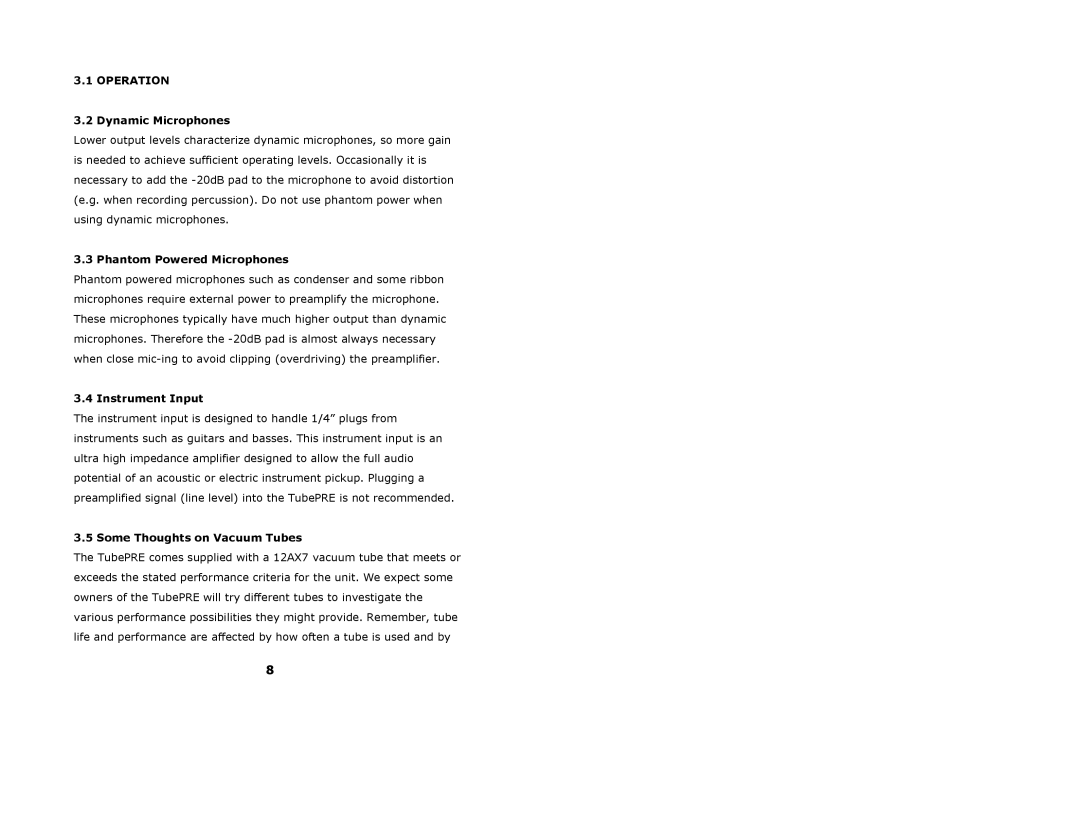3.1OPERATION
3.2Dynamic Microphones
Lower output levels characterize dynamic microphones, so more gain is needed to achieve sufficient operating levels. Occasionally it is necessary to add the
3.3 Phantom Powered Microphones
Phantom powered microphones such as condenser and some ribbon microphones require external power to preamplify the microphone. These microphones typically have much higher output than dynamic microphones. Therefore the
3.4 Instrument Input
The instrument input is designed to handle 1/4” plugs from instruments such as guitars and basses. This instrument input is an ultra high impedance amplifier designed to allow the full audio potential of an acoustic or electric instrument pickup. Plugging a preamplified signal (line level) into the TubePRE is not recommended.
3.5 Some Thoughts on Vacuum Tubes
The TubePRE comes supplied with a 12AX7 vacuum tube that meets or exceeds the stated performance criteria for the unit. We expect some owners of the TubePRE will try different tubes to investigate the various performance possibilities they might provide. Remember, tube life and performance are affected by how often a tube is used and by
8
